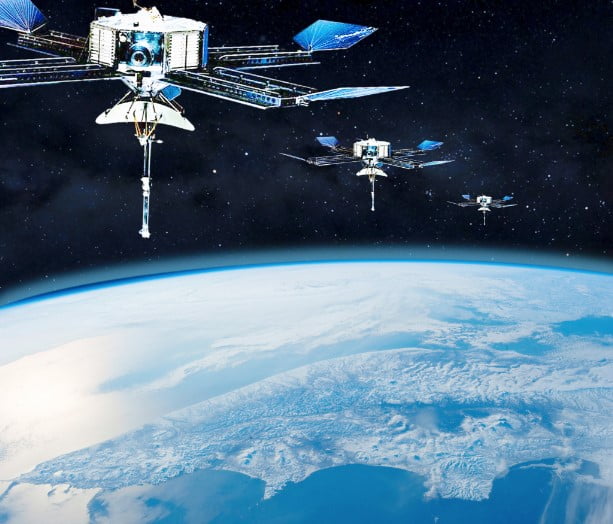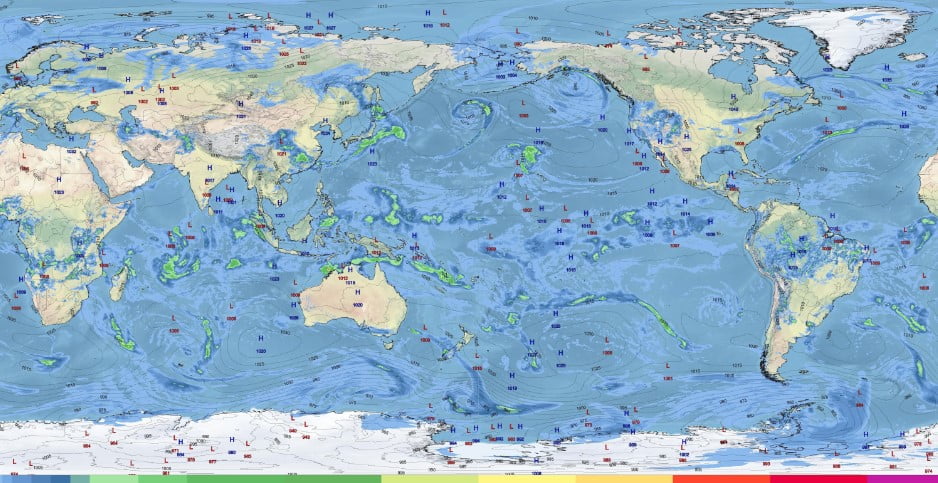Quantum Computing Use Case: Quantum Computing Weather Forecasting
In July 2021, Germany and Belgium witnessed what many experts considered Central Europe’s worst flooding in many decades. Media reports indicated that nearly 200 people died in the incident, making it Europe’s deadliest flood since 1985. While Germany lost about 170 people, Belgium recorded about 36 deaths. In addition to the deaths and wanton destruction, the authorities in both countries stated that over 200 people were missing. During the tsunami-like flood, rivers and streams in the Eifel Mountain range were hard hit.

Prior to the flooding, the Cologne-Stammheim weather station measured the total rainfall on 14th July and recorded 153.5 millimetres (6.04 inches). The amount was roughly twice the average rainfall for the entire month of July. As a result, the meteorologists warned that there was an imminent danger, but the residents largely ignored the warnings. From Germany to Australia, the United States to China, and South Africa to Brazil, floods often cause monumental destruction of unparalleled proportions. This, among other reasons, is why accurate weather forecasting is critical in our everyday lives, and we must take steps to improve what we have today.
This is where quantum computing (QC) comes in. As the new technology makes progress, it becomes clearer how experts will deploy it to solve today’s real-world problems. Quantum computing-based weather forecasting is one area taking shape as QC researchers and engineers continuously study how the emerging technology would greatly enhance operations around it. In this article, we will dive into the details to review some companies advancing the use of quantum technology to transform weather forecasting and climate modelling. Before that, let’s identify some issues we face in today’s meteorology that necessitated the deployment of quantum technology to the landscape.
How Weather Forecasting Works
Irrespective of where you are in the world, it is not uncommon for the weatherman to predict that there will be rainfall, which often prepares people’s minds to carry their umbrellas as they leave their homes. At the end of the day, the weather may just be cloudy or there may be drizzles that don’t require anyone to take along an umbrella. If you have experienced that, you are not alone. In all fairness to the weatherman, it is difficult to achieve 100% accuracy in such predictions.

Why meteorologists find it difficult to accurately predict the weather is that the computer models in use today have several limitations. While these professionals are likely to get their 24-hour weather forecast right, predicting the weather for days is always dicey. We can identify three factors that hamper accurate forecasting: the amount of available data, the time available to analyse it, and the complexity of weather events. First, the forecast relies primarily on a huge data collection network, such as land-based weather stations, weather satellites, and weather balloons. The combination of data from all those sources creates an observational data network. Once meteorologists gather the data, they build a computer model with it. Afterwards, they use the data to predict the weather outcomes.
Quantum Computing Companies Changing the Narrative
With QC systems, weather forecasting becomes a lot better because the new technology offers high computational capacity. Data simulation on a QC system requires encoding the mathematical models and equations that describe the earth’s atmosphere into quantum states and operations using the QC systems. In other words, meteorologists convert the classically represented models into QC-compatible representations and mappings so the QC systems can interpret them as quantum algorithms and quantum gates. Once they have simulated the data, they can use the outcomes to accurately predict the weather patterns and climate trends. In summary, QC-based weather forecasting involves the following processes: data acquisition, data processing, quantum algorithm design, quantum circuit design, quantum hardware implementation, execution and post-processing, and integration with classical systems. Now, let’s review some companies blazing the trail in this space.
Rigetti Computing
Founded in 2013, Rigetti has left indelible marks on the QC industry over the past decade. The company primarily builds quantum computers and the superconducting quantum processors for powering them. One area the NASDAQ-listed company has done an excellent job is in weather forecasting. By leveraging the existing machine-learning workflows, Rigetti combined classical and quantum machine-learning techniques to output high-quality synthetic radar data and enhance classical models for storm prediction. To achieve this, the QC firm experimented with its 32-qubit system to show that it can use QC systems to improve weather predictions in the future.
The American company demonstrated in 2021 that its research was in top gear to effectively integrate QC systems in sophisticated classical workflows and carry out tasks that have a real-world impact. It also showed this by combining a hybrid quantum approach and a classical baseline model. What’s more, the synthetic data that it used for the experiment was from a supervised machine learning model. In the course of performing the research, the team found that replacing one layer of the Offshore Precipitation Capability (OPC)’s classical neural networks with a QC convolutional layer enhanced the model’s ability to forecast inclement weather conditions.
In conclusion, the leading QC research and development company noted that QC systems can work seamlessly with classical computers, adding that it is possible to directly insert the quantum subroutines into a practical machine learning workflow. The full-stack QC company also disclosed that its meteorological solution will be for more accurate warnings of extreme weather events, thereby saving lots of lives often lost whenever such disasters occur.
PASQAL and BASF (Badische Anilin und Soda Fabrik)
In July 2022, PASQAL, the full-stack maker of neural atoms of quantum processors, announced that it would partner with the world’s largest chemical company, BASF, for weather explorations and other computational fluid dynamics. The collaboration is critical as it will enable the new partners to analyse and output more accurate forecasts as physics-based weather models are usually complex to simulate. These models often confuse experts because they use huge data volumes generated from winds, heat transfer, solar radiation, terrain technology, and relative humidity. To achieve high-level precision in forecasting, field experts require a complex set of nonlinear differential equations. Over time, BASF has generated data from the aforementioned sources and applied its findings to facilitate crop production.
With PASQAL teaming up with BASF, the former will deploy its quantum solutions to simplify BASF’s complex computational simulations once quantum hardware matures to the point where it can enhance those algorithms. Although the two partners didn’t disclose the finer points of the laudable project, they were optimistic that the outcome would help us reduce the impact of climate change and drive progress to a more sustainable future. Giving more insight into the project, the QC firm stated that it looks forward to solving the foundational complex nonlinear differential equations by implementing the fast-growing quantum neural networks on its neural-atom quantum processor. The approach is similar to the physics-informed neutral networks (PINN), which is a type of universal function approximators that can embed knowledge of any physical laws which govern the data-set in the learning process.
International Business Machines (IBM)
In January 2019, IBM announced that it has made appreciable progress in using quantum technology to analyse atmospheric data and render more accurate forecasts. The innovative QC machine can improve traditional mathematical methods of tracking and forecasting weather by simulating and analyzing large data volumes much faster and more efficiently than today’s conventional computers. To achieve this feat, the leading quantum computing corporation partnered with The Weather Company’s University Corporation for Atmospheric Research (UCAR) and the National Centre for Atmospheric Research (NCAR). IBM utilises a superconducting-based weather model that can predict weather events five times better than the previous sophisticated systems.
It is worth noting that IBM acquired The Weather Company in 2016 and that the weather company has developed a new forecasting system that achieves high-level precision in local prediction of atmospheric conditions. In a press statement, IBM noted that most places have access to low-quality forecasts based on weather models with less accuracy than those currently used in the United States and Western Europe. However, its new approach would culminate in improved hyperlocal weather patterns, thereby leading to all-round improvement.
The American QC behemoth also disclosed that as computing power advances and data-collecting IoT devices get better, the innovative model will deliver more accurate results. Although IBM’s Weather Company still uses IBM’s Power9 (a system that can crunch 10 terabytes of weather data every day), plans are underway to use QC systems to simulate and analyse the data models. IBM is one of the few QC companies that have developed universal-gate-based quantum computers, with its latest being 433-qubit Osprey, and the tech corporation has set the motion in place to build a 100,000-qubit system within a decade.
Weather Forecasting: Quantum Computers Over Classical Computers
Over the last two decades, weather forecasting has improved because meteorologists have deployed specialised supercomputers (classical computers) in the field. For instance, 5-day weather forecast of nowadays is similar to the 3-day forecast a decade ago. To generate their result, meteorologists use supercomputers to analyse billions of data points they gathered through satellite imaging in space. They also use on-the-ground weather systems to hasten the ensemble modelling, which allows them to map different scenarios. Afterwards, they apply a numerical weather prediction model to work out its new outcomes and tell the people what they should expect.

Even with supercomputers, experts run these simulations up to 50 times to determine the accurate forecast. Based on the weather patterns they observed, they cannot exceed a one-week weather forecast. Most times, they see a chaotic atmospheric result, making it difficult to accurately tell future outcomes. More importantly, meteorologists use different models in various countries to simulate their data on supercomputers, but all the models have peculiar flaws. Hence, they are embracing and deploying quantum computers to revolutionise the industry. Keep in mind though that just like quantum technology itself, the use of QC systems to give more accurate weather outcomes and climate modelling is still in its infancy. However, these companies aren’t resting on their laurels in their bid to harness the gains achieved in the QC industry so far.
In a nutshell, weather specialists are turning to quantum technology to improve weather forecasts because conventional computers have limited computational power and calculation speed. If what we have seen so far is anything to go by, QC systems have much better processing power and more accurate results (quantum advantage). Put simply, they can process more atmospheric data while outputting it with high-level precision. In meteorology, accuracy and timeliness matter. Indeed, when experts achieve this with quantum technology, it helps to edge the world closer to a weather forecast everyone can bank on for informed decision-making and disaster management.
Conclusion
Aside from QC companies that invest in weather predictions, universities have also followed suit, expending huge sums to apply the nascent technology in meteorology. For instance, researchers at the UK’s University of Sussex have developed quantum algorithms that can accurately predict the probability of rainfall in certain areas. The scientists said that they used QC systems to achieve the milestone because the new technology can process large amounts of data. On a broader scale, researchers at Canada’s University of Toronto are exploring how to use QC systems to improve global climate models. Given their findings, there are strong indications that quantum technology could provide more accurate climate predictions by simulating and processing more atmospheric data.

Much as these research studies remain sketchy at the writing time, meteorologists are bullish about their outcomes. The optimism is largely due to positive lab results – something they wish to take to the real world. By allowing meteorologists and climatologists to incorporate more data, QC systems will enable them to give us better results in the near future. We can also use the results to improve weather-sensitive industries like energy and agriculture. But we must not turn a blind eye to the drawbacks of applying quantum technology in weather forecasting and climate modelling. Thankfully, researchers are busting a gut to develop better QC systems and address those underlying constraints. As all these efforts go into improving weather outcomes, relevant authorities must act in good time to avert the causalities of predicted disasters.


